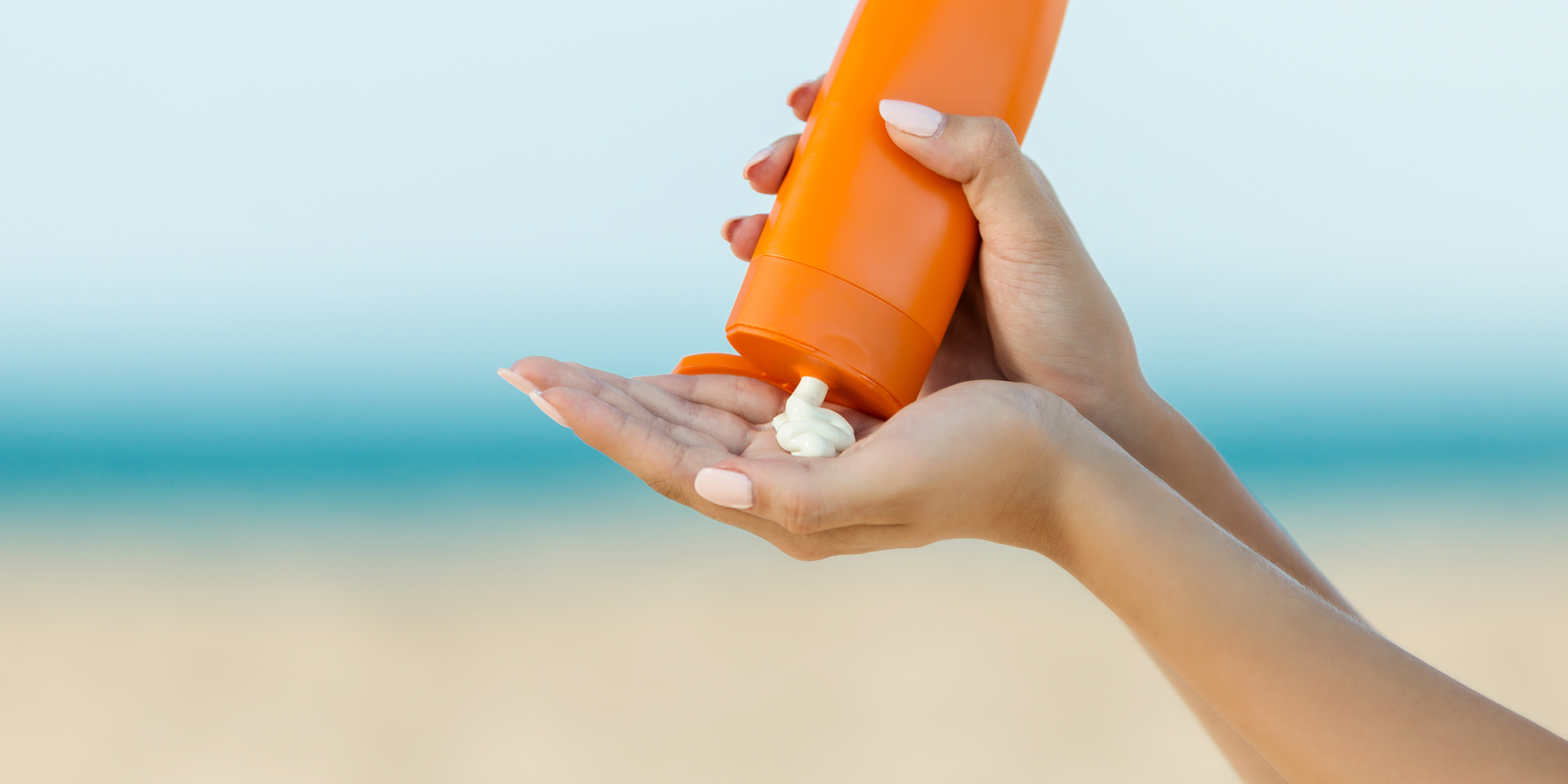Tips for Choosing the Right Sunscreen
July 16, 2023
Categories: Health & Wellness, Cancer Care
Tags: skin cancer
Practicing sun safety is important for all ages and skin types. Repeated sunburns can accelerate premature aging, leading to wrinkled skin, dark patches and rough spots. More importantly, ultraviolet (UV) sun exposure can cause skin cancers (such as melanoma) to form.
Lighter skin is more prone to sunburn, damage and therefore skin cancer. Although people with darker skin have a lower risk, they can still develop skin cancer. In fact, studies have shown that an individual’s risk of developing melanoma doubles if he or she has experienced only five or more episodes of sunburn.
One of the most important precautions you can take against long-term complications from sun damage is to choose the right sunscreen with the appropriate Sun Protection Factor (SPF).
According to the Skin Cancer Foundation, the SPF number on your sunscreen refers to the amount of time it would take for the sun’s UV radiation to redden your skin when using the product exactly as directed versus the time it would take without using any sunscreen.
In other words, if you apply sunscreen with SPF 30, you should be able to be in the sun without burning for 30 times longer than you would without sunscreen.
The best way to protect your skin is by choosing a sunscreen based on your particular skin type that has an adequate level of SPF to block UV rays. Here are some tips and facts to keep in mind when making this important choice.
Choosing an SPF that can maximize protection
If you want to be as safe as possible, make sure to:
- Use a sunscreen with an SPF of at least 30
- Use a sunscreen that protects against both UVA and UVB sunrays
- Apply sunscreen to dry skin 15 minutes before sun exposure
- Apply sunscreen generously. A general rule of thumb is that it takes one ounce (or a handful) of sunscreen to cover your body. Applying less than this will mean that you will not reach the listed SPF on the bottle
- Reapply sunscreen every two hours, especially after sweating or swimming
In addition to UV light, visible light can cause skin darkening (called hyperpigmentation) in people with darker skin. Visible light is the light that the human eye can see, including those from nature's sunlight to artificial light sources from ceiling lights, phones, computer screens and TVs.
Tinted sunscreens that contain iron oxides can help protect against visible light and prevent hyperpigmentation. For more information visit: https://www.aad.org/media/stats-sunscreen
Medications and sunburn risk
Regardless of your skin type, you should know that some medications can be photosensitizing – meaning they can increase your risk for sunburn. Some medications that can increase the likelihood for sunburn include:
- Antihistamines (the class of drugs used to treat allergies)
- Certain hormonal birth controls
- Non-steroidal anti-inflammatory drugs (NSAIDs), which treat inflammatory conditions
- Tetracyclines (antibiotics used to treat infections)
Talk to your doctor if you take any of these medications. You may need to choose a sunscreen with a higher SPF.
Remember the UVA rays!
UVB rays are generally the most dangerous, but UVA rays are also known to play a role in premature aging and skin cancer formation.
Some organic sunscreens and sunblocks that contain zinc oxide or titanium dioxide can provide all-around protection for UVB and UVA rays.
Look for phrases like multi-spectrum, broad-spectrum, or simply UVB/UVA protection on sunscreen labels.
Book an appointment today to see a Loyola specialist by self-scheduling an in-person or virtual appointment using myLoyola.
